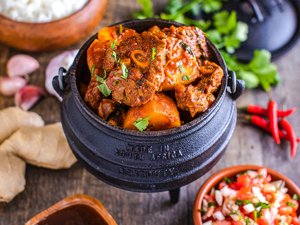
The relationship between food and national identity is profound and multifaceted, serving as a reflection of a nation’s culture, history, and social fabric. Food not only nourishes but also embodies the traditions, values, and stories that define a community. This exploration delves into how culinary traditions, cultural heritage, and iconic dishes shape a nation’s character and pride.
Culinary Traditions as Cultural Markers
Culinary traditions are vital expressions of cultural identity. They encapsulate the history, geography, and social practices of a nation. For instance, the ingredients used in traditional dishes often reflect local agricultural practices and climate conditions. In Italy, pasta is a staple that varies regionally, showcasing local ingredients and cooking techniques. Similarly, India’s diverse culinary landscape is shaped by its geography—coastal regions emphasize seafood, while inland areas focus on grains and legumes1.
These culinary practices serve as cultural markers that foster a sense of belonging among individuals. Traditional recipes passed down through generations create connections to ancestry and heritage. For example, the preparation of specific dishes during festivals or family gatherings reinforces cultural identity and community ties. Such practices highlight the importance of food in maintaining continuity within a culture.
Iconic Dishes as Symbols of National Pride
Certain dishes become emblematic of a nation’s identity, evoking feelings of pride and patriotism. National dishes often serve as ambassadors of culture on the global stage. For instance, sushi represents Japanese cuisine worldwide, while paella is synonymous with Spanish culinary heritage. These iconic foods not only showcase unique flavors but also encapsulate the stories and traditions behind them.
In many cases, national dishes are celebrated during significant events or holidays, further solidifying their role in cultural identity. In Mexico, for example, mole is often prepared for celebrations such as weddings and religious festivals, symbolizing unity and tradition within families and communities1. The act of sharing these dishes fosters social cohesion and reinforces national pride.
Historical Influences on Culinary Identity
The history of a nation significantly influences its culinary landscape. Historical events such as colonization, migration, and trade have introduced new ingredients and cooking techniques that shape contemporary cuisines. For example, the Columbian Exchange drastically altered food systems worldwide by introducing crops like potatoes and tomatoes to Europe while bringing wheat and livestock to the Americas.
In places like India, centuries of historical influences have created a rich tapestry of flavors. The Mughal era introduced aromatic spices that are now staples in Indian cooking. Similarly, the fusion of indigenous ingredients with foreign influences has led to the development of unique regional cuisines1. This historical context underscores how food can reflect broader narratives about national identity.
Food as a Means of Cultural Transmission
Food serves as a powerful vehicle for cultural transmission across generations. The act of preparing traditional meals often involves rituals that reinforce cultural values and practices. In many cultures, cooking is viewed as an art form that requires skill and knowledge passed down from elders to younger generations.
For instance, in Honduras, traditional dishes are integral to family gatherings and celebrations. The preparation of meals like carne asada or tamales involves communal effort, emphasizing collaboration and shared heritage2. This communal aspect highlights how food fosters connections within families while preserving cultural practices.
In immigrant communities, food becomes even more critical in maintaining cultural identity. As individuals navigate new environments, they often turn to traditional foods as a means of preserving their heritage. The preparation and sharing of cultural dishes can evoke nostalgia and create a sense of belonging in unfamiliar settings3.
The Intersection of Food and National Identity
Food plays an essential role in shaping national identity by reinforcing social norms and values. Culinary practices often reflect broader societal dynamics such as gender roles, class distinctions, and power structures. For example, the types of food consumed can signal social status or cultural affiliation within a community.
Moreover, governments may promote national cuisines as part of efforts to assert cultural identity on the global stage. Initiatives to protect traditional foods from foreign competition underscore the importance placed on culinary heritage in defining national character4. Such actions reflect a desire to maintain distinctiveness in an increasingly globalized world.
Modern Challenges to Culinary Heritage
While food remains a vital component of national identity, globalization poses challenges to traditional culinary practices. The proliferation of fast food chains and processed foods can lead to the erosion of local cuisines. As culinary landscapes shift due to modern influences, there is growing concern about preserving cultural heritage through food.
Many nations are responding by emphasizing the importance of sustainable food practices that honor traditional methods while adapting to contemporary needs. Efforts to promote local ingredients and support small-scale farmers can help preserve culinary diversity while fostering economic resilience2.
Additionally, educational initiatives aimed at teaching younger generations about their culinary heritage play a crucial role in maintaining cultural identity amidst changing landscapes3. By instilling appreciation for traditional foods and cooking methods, communities can ensure that their culinary legacies endure.
Conclusion: The Enduring Power of Food in Defining Identity
Food is an integral part of national identity that transcends mere sustenance; it encapsulates cultural values, historical narratives, and social practices. Through culinary traditions, iconic dishes, and communal dining experiences, individuals forge connections with their heritage while navigating contemporary influences.
As globalization continues to shape culinary landscapes worldwide, nations must balance preserving their
